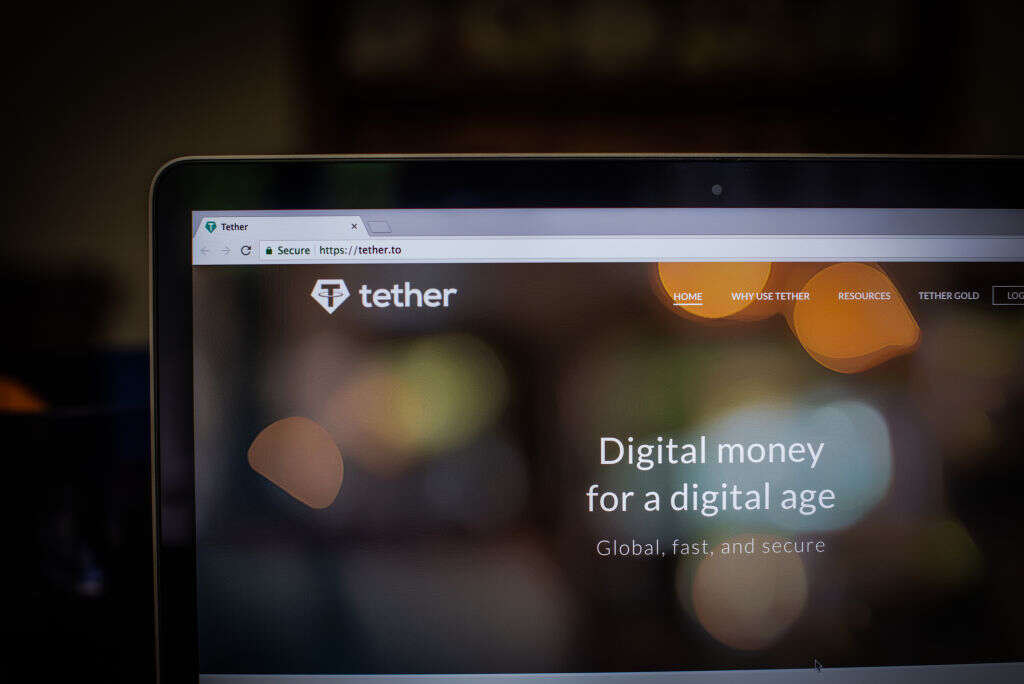
The value of the cryptocurrency market has crashed this week after a so-called stablecoin lost more than 70% of its value. That drop has caused shockwaves in the cryptocurrency ecosystem, with the world’s biggest stablecoin, Tether, dipping below its $1 peg value.
Stablecoins are supposed to be a more dependable form of cryptocurrency than highly volatile tokens such as Bitcoin, with the UK government last month announcing plans to regulate stablecoins as a payment mechanism. But this week’s crypto crash, driven by Terra’s issues, could undermine attempts to encourage stablecoin adoption.

Crypto crash: what’s happening to Terra and Tether stablecoins?
A stablecoin is a type of cryptocurrency which has its value attached to the performance of a conventional fiat currency such as the US dollar. Because of this, it can usually avoid wild fluctuations in value while still maintaining the privacy and instant payments which cryptocurrencies offer. A ‘reserve’ of fiat currency equivalent to the amount of stablecoin in circulation is held by the issuer as an additional level of security.
However, new forms of stablecoin are emerging. One example is Terra, which uses an algorithmic system to ensure that the value of the currency remains stable. This system failed this week, and the value of Terra fell from its usual price of around $1 to just 26 cents this morning, according to market tracker Coinbase.
Do Kwon, co-founder of Terraform Labs, the Singapore-based company behind Terra, has promised action for users, but so far details have not been forthcoming.
2/ I understand the last 72 hours have been extremely tough on all of you – know that I am resolved to work with every one of you to weather this crisis, and we will build our way out of this.
— Do Kwon 🌕 (@stablekwon) May 11, 2022
Together.
Terra’s travails have had a knock-on effect on the entire crypto market, which has fallen to a value of $1.2trn today, its lowest level for more than a year. Indeed, the company’s non-tethered cryptocurrency, Luna, saw almost its entire value wiped out, having been worth more than $60 just three days ago.
This has impacted Tether, the world's biggest stablecoin, which fell to a value of 94 cents early on Thursday morning, before recovering to 99 cents at the time of writing. With an overall value of $80bn, Tether is supposed to be pegged at a value of $1 because its founders say it is backed by an equivalent reserve of dollar-based assets. However, this has been called into question, with the organisation declining to provide detailed information on these assets.
In October, Tether was fined $41m by the US Commodity Futures Trading Commission for misleading statements it made between 2016-2019, suggesting it was fully backed by cash reserves.
What does the crypto crash mean for stablecoins?
The main use case for stablecoins currently is to provide ‘vehicle currency’, a stable intermediary for users wanting to trade fiat currencies for cryptocurrencies and vice versa. Speaking to Tech Monitor earlier this year, Professor Ganesh Viswanath-Natraj, assistant professor of finance at Warwick Business School, said: “There are a lot of use cases for stablecoins, but they’re mainly in the crypto-sphere. They’re mainly used as a vehicle currency in the crypto market and it’s a function they perform extremely well."
However, others have made the case that stablecoins could act as digital currencies for consumers and businesses to use as a payment method for goods and services. The most high-profile project in this area was Diem, a stablecoin backed by Facebook's parent company, Meta, as well as Visa and Mastercard. However, this was cancelled in January after a series of regulatory problems.
Last month, the UK government announced plans to extend the country's e-money regulations to include stablecoins, so they can be used as a payment mechanism. “[W]ith appropriate regulation, [stablecoins] could provide a more efficient means of payment and widen consumer choice," the government said, following a public consultation.
Other regulators have questioned the wider stability of stablecoins. A financial stability report from the US Federal Reserve, released earlier this week, said stablecoins are vulnerable to bank runs, and that a lack of transparency around the assets can exacerbate this vulnerability.
At the same time as stablecoins struggle, central bank digital currencies (CBDCs) are growing in popularity. These are a type of currency with direct backing from a country's central bank, and thus offer even more reassurance than a private stablecoin because there is no danger their financing will become as opaque as Tether's. As reported by Tech Monitor last week, nine out of ten central banks polled by the Bank for International Settlements are working on CBDC projects.
This week's crypto crash, and the problems faced by Terra and now Tether, suggest the use of stablecoins as a widespread digital currency could be problematic.
Professor Viswanath-Natraj believes that even if more consumer stablecoins are developed, CBDCs are likely to remain a better option for digital payments. “For something ambitious [like Diem] to happen it will have to come from within the banking system,” he said. “I’m not sure if it would be more beneficial than a CBDC, which is always going to be a bit safer because it has the direct backing of the government, whereas private stablecoins could always encounter ‘bank run’ risks, where there are not enough reserves to meet deposited demands."






